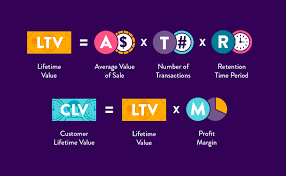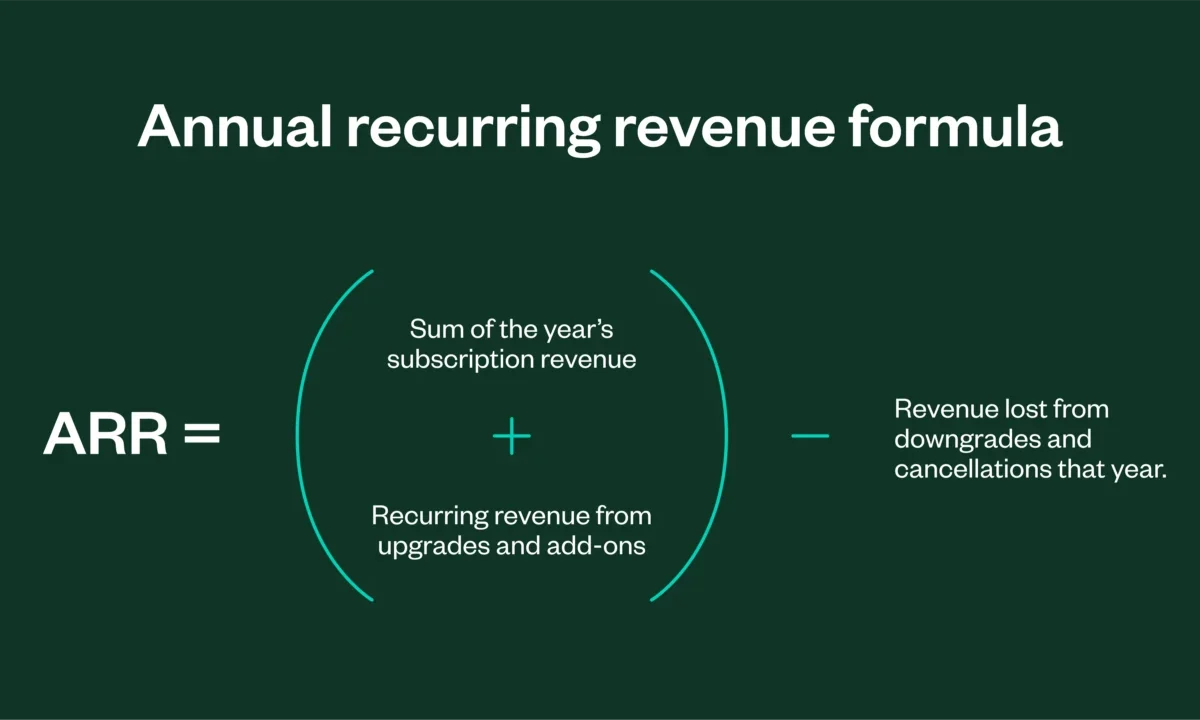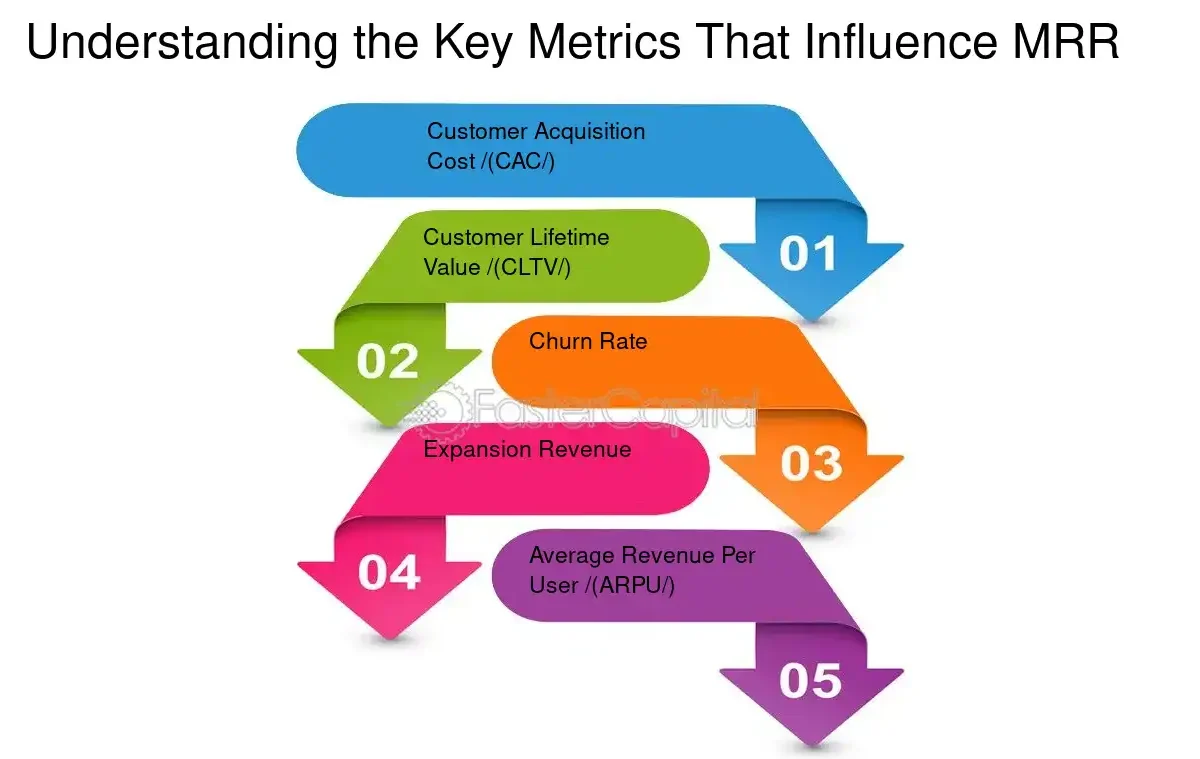In the dynamic world of SaaS (Software as a Service), measuring the right marketing metrics is key to achieving sustained business growth. These metrics offer deep insights into how your marketing efforts translate into revenue, customer retention, and overall success. By tracking and analyzing these data points, SaaS companies can fine-tune their marketing strategies, to align with business goals, allocate resources effectively, and ensure important marketing metrics have a high return on investment (ROI). The competitive nature of the SaaS industry can lead to a customer churn rate and demands a comprehensive understanding of metrics that impact acquisition, retention, and revenue growth. From Customer Acquisition Cost (CAC) and Monthly Recurring Revenue (MRR) to customer churn out rate and Customer Lifetime Value (CLV), each metric paints a picture of how well your business attracts, retains, and satisfies customers. By focusing on essential marketing metrics first, SaaS companies can not only measure success but also uncover areas for improvement. This approach ensures that marketing strategies are not based on assumptions but on actionable data, fostering a culture of continuous improvement and scalability. Tracking these metrics and marketing performance is not just about numbers; it’s about unlocking the potential to grow, thrive, and outperform competitors in the ever-evolving SaaS landscape. Understanding SaaS Marketing Metrics Metrics are the backbone of any successful SaaS business. In a model where recurring monthly revenue only is pivotal, metrics serve as the compass that guides decision-making across the marketing team, the sales team, and product development. They provide valuable insights into customer behavior, campaign effectiveness, and revenue trends, allowing SaaS companies to make data-driven decisions instead of relying on guesswork. By tracking the right metrics, businesses can identify strengths, uncover inefficiencies, and respond proactively to challenges. For example, metrics like Customer Acquisition Cost (CAC) highlight how cost-efficient your marketing efforts are, and customer success teams while Customer Lifetime Value (CLV) helps measure the profitability of new customers acquired over time. Together, these numbers form the foundation for sustainable growth and profitability. The importance of SaaS metrics extends beyond financial performance. They also reveal how well your business is meeting customer needs, which is vital for long-term retention. Metrics such as churn rate and Net Promoter Score (NPS) reflect customer satisfaction and loyalty, giving you a clear picture of whether your product delivers the promised value. Ultimately, these insights enable SaaS companies to optimize strategies, improve customer experiences, and build a predictable revenue stream. How Metrics Drive Growth in SaaS Businesses Metrics act as growth engines for SaaS businesses, enabling them to navigate a highly competitive landscape with precision and efficiency. By analyzing key performance indicators, companies can uncover trends, identify areas for improvement, and optimize strategies across departments. For instance, metrics like Customer Lifetime Value (CLV) and Customer Acquisition Cost (CAC) provide a clear understanding of customer profitability and acquisition efficiency. When these metrics are used together, businesses can determine the most cost-effective marketing channels, improve resource allocation, and create a sustainable customer acquisition strategy. Additionally, metrics provide invaluable insights into customer behavior, which directly impacts growth. Tracking churn rate and Net Promoter Score (NPS) helps businesses identify factors influencing customer retention and loyalty. A declining churn rate or an increasing NPS score indicates stronger customer satisfaction, which can translate into higher recurring revenue and referrals. Metrics also help SaaS companies identify high-performing sales and marketing tactics, enabling them to scale these strategies and maximize returns. By relying on actionable data, SaaS businesses can drive predictable growth while continuously improving their offerings to meet evolving customer demands. Key Metrics to Track for SaaS Success Tracking the right metrics is essential for the success of any SaaS business. These metrics provide a roadmap for decision-making, helping companies optimize their marketing, marketing and sales efforts, and customer retention strategies. By analyzing critical data points such as customer acquisition costs, recurring revenue, and retention rates, SaaS businesses can identify areas that need attention and adapt their strategies accordingly. Metrics not only reveal the current state of the business but also guide growth projections, ensuring that every initiative aligns with long-term goals. Each metric serves a specific purpose and offers unique insights into the business. While Customer Acquisition Cost (CAC) highlights the efficiency of your marketing efforts, metrics like Customer Lifetime Value (CLV) demonstrate the profitability of your customer base. By combining these key performance indicators (KPIs), SaaS companies can build a comprehensive understanding of their operational effectiveness and make data-driven decisions to sustain growth. Below, we’ll dive deeper into five essential metrics every SaaS company should monitor. Customer Acquisition Cost (CAC) Customer Acquisition Cost (CAC) represents the total expense involved your marketing team has in acquiring a new customer. This metric includes marketing expenditures, sales salaries, and software tools used in your customer acquisition and sales process alone. By calculating CAC, SaaS businesses can evaluate the efficiency of their marketing campaigns and sales expenses, and identify areas for cost optimization. A lower CAC indicates that your business is effectively converting prospects into paying customers without overspending. By focusing on high-performing channels and strategies, you can reduce CAC over time. For instance, leveraging organic marketing methods or referral programs can both lead to customer rate and significantly decrease acquisition costs while maintaining or increasing lead quality. CAC, when compared to other metrics like CLV, provides deeper insights into the profitability of your customer acquisition and lead generation efforts. Customer Lifetime Value (CLV) Customer Lifetime Value (CLV) measures the total annual recurring revenue that a customer generates throughout their relationship with your business. This metric is crucial for understanding the long-term profitability of your customer base. A high CLV indicates that customers are staying longer and contributing more to your annual recurring revenue, making them valuable assets to your business. Monitoring CLV enables SaaS companies to refine pricing strategies, develop targeted retention campaigns, and prioritize high-value customers. When compared to CAC, CLV can lead to customer rate and offers insights into the payback period and overall marketing ROI. Increasing CLV involves strategies
SaaS Metrics & Revenue
- Trendinsaas
- No Comments
- January 29, 2025
Essential SaaS Marketing Metrics to Measure for Business Growth
- Trendinsaas
- No Comments
- January 28, 2025
Mastering Annual Recurring Revenue: Key Insights and Calculation Tips
Annual Recurring Revenue (ARR) is a critical metric for subscription-based businesses, offering a comprehensive view of predictable revenue streams. By mastering ARR, companies can better forecast financial outcomes, allocate resources effectively, and identify future growth opportunities. Understanding the calculation and nuances of ARR not only aids in optimizing revenue but also ensures accurate financial planning. With the right strategies, tools, and a focus on customer retention, businesses can leverage ARR to drive long-term success and sustainability in competitive markets. Introduction to Annual Recurring Revenue (ARR) Annual Recurring Revenue (ARR) is among the most important KPIs for businesses with subscription-based models. It measures the predictable and steady income a company can expect annually, excluding irregular or one-time payments. ARR provides clarity on a company’s expects financial health and growth potential, making it a key metric for strategic decision-making. With ARR, businesses can create accurate revenue forecasts that help align their goals and resources effectively. A clear understanding of ARR allows businesses to better manage their financial resources. It simplifies budgeting, enabling companies to allocate funds efficiently across departments such as marketing, operations, and customer success. ARR also serves as a benchmark for tracking performance against competitors and industry standards, making it easier to identify strengths and areas for improvement. Furthermore, ARR is not just about measuring revenue; it also provides insights into customer behavior. By analyzing ARR trends, businesses can uncover valuable information about customer retention, churn rates, and upselling opportunities to new customers. These insights are instrumental in shaping strategies that promote sustainable growth. Understanding Recurring Revenue Recurring revenue refers to income that a subscription model or business earns consistently over time from repeat customers. Unlike one-time sales, recurring revenue offers stability and predictability, making it a cornerstone of subscription-based businesses. This model ensures that a company receives payments at regular intervals, reducing financial volatility and enabling better long-term planning. For businesses, recurring revenue serves as a reliable foundation for scaling operations. It allows companies to predict cash flow with greater accuracy, ensuring they can meet operational costs and invest in growth opportunities. Moreover, this revenue model fosters stronger relationships with customers, as it emphasizes continuous engagement and value delivery. Subscription-based businesses benefit significantly from recurring revenue as it helps maintain a consistent income stream. By focusing on customer retention and delivering exceptional value, companies can build a loyal customer base that contributes to sustained revenue growth. As a result, recurring revenue not only ensures financial stability but also creates opportunities for innovation arr growth and expansion. Calculating Annual Recurring Revenue The formula for calculating ARR is straightforward yet comprehensive: ARR = (Total revenue from new subscriptions in a period) + (Recurring revenue from existing subscriptions at the beginning of the period) – (Churned revenue from existing subscriptions during the period) + (Upgrades to annual subscriptions or downgrades to existing subscriptions during the period) To determine ARR, divide each customer’s total contract value by the duration of their contract in years. Summing up these values gives the total ARR, which reflects the total dollar of revenue generated annually from subscription contracts The formula for calculating ARR is both simple and comprehensive, making it easy for businesses to track their recurring revenue. It is calculated by adding the total revenue from new subscriptions to the recurring revenue from existing customers, subtracting churned revenue, and factoring in any upgrades or downgrades during the period. This detailed approach ensures accuracy and provides a holistic view of a company’s financial health. When calculating ARR yearly subscriptions, it’s essential to account for the specific terms of customer contracts. For instance, dividing the total contract value by the duration of the agreement provides a clear understanding of how much revenue each customer contributes annually. Summing up these values gives the total ARR, offering a complete picture of annual revenue from subscriptions. Accurate ARR calculation is critical for making informed financial decisions. It helps businesses identify trends, such as growth rates or potential risks, and adjust their strategies accordingly. By maintaining precision in ARR calculations, companies can ensure that they are making data-driven decisions to support their growth objectives. ARR vs. MRR: Key Differences Annual Recurring Revenue (ARR) and Monthly Recurring Revenue (MRR) are complementary metrics that provide insights into different aspects of a company’s financial health. ARR is calculated annually, making it ideal for long-term planning and strategic decision-making. On the other hand, MRR provides a more detailed, month-to-month perspective, allowing businesses to track short-term changes. While ARR offers a macro-level view of a company’s revenue, MRR delivers a granular understanding of financial performance. Businesses often use MRR to monitor their customer acquisition cost, churn, and revenue fluctuations on a monthly basis. This level of detail helps companies identify emerging trends and take corrective actions promptly. Both metrics are essential for subscription-based businesses, as they serve different purposes. ARR is best suited for evaluating long-term growth potential, while MRR is ideal for tracking operational efficiency. Together, they provide a comprehensive view of financial performance, empowering businesses to make well-informed decisions for existing customers. Optimizing Your ARR To optimize ARR, businesses must focus on strategies that enhance customer retention and reduce churn. This involves close collaboration between sales, marketing, and customer success teams to deliver exceptional customer experiences. By addressing customer needs proactively, businesses can foster loyalty and drive long-term revenue growth. Analyzing customer behavior through cohort analysis can reveal patterns that influence retention and churn. This analysis allows businesses to segment customers based on their behavior and preferences, enabling targeted strategies for each group. Additionally, offering personalized solutions, such as upgrades or add-ons, can further enhance ARR by increasing customer lifetime value. Investing in customer success initiatives is another effective way to optimize ARR. By ensuring that customers derive maximum value from their subscriptions, businesses can strengthen relationships and encourage renewals. These efforts not only boost ARR but also create a strong foundation for sustainable growth. Common ARR Calculation Mistakes Avoiding mistakes in calculating arr is essential for maintaining accuracy and credibility. One
- Trendinsaas
- No Comments
- January 28, 2025
ARR vs MRR: The Essential Guide to Choosing the Right Metric for SaaS
ARR vs MRR: The Essential Guide to Choosing the Right Metric for SaaS In the world of SaaS (Software as a Service), understanding your company’s recurring revenue stream and metrics is crucial to tracking growth and making informed decisions. ARR (Annual Recurring Revenue) and MRR (Monthly Recurring Revenue) are two of the most important metrics for measuring recurring revenue streams. While they may seem similar, each has unique use cases and benefits, making it essential to know which is best suited for your business goals. Choosing between ARR and MRR requires a clear understanding of your business model, contract types, and the level of detail you want in your revenue tracking. This guide will help you navigate these metrics and determine the right approach for your SaaS business. Understanding the Recurring Revenue business model The recurring or recurring revenue model is the backbone of SaaS businesses, offering financial stability and predictability. By understanding its definition and importance, companies can better harness this revenue type to drive sustainable growth. Definition of recurring revenue Recurring revenue refers to the consistent and predictable portion of a company’s revenue stream or total revenue amount, generated through customer payments that renew based on contractual agreements. This ensures a stable income stream, helping businesses maintain financial predictability. Recurring revenue provides benefits like enhanced client retention, additional revenue generated smoother cash flow, and subscription based businesses a more reliable financial foundation. For SaaS businesses, this is particularly valuable as it forms the core of their subscription-based models. Importance of recurring revenue for SaaS businesses For SaaS companies, tracking recurring revenue serves as a reliable measure of a business’s financial health. It enables businesses to pinpoint areas for improvement and optimize their operations for long-term growth. Additionally, recurring revenue allows companies to forecast cash flow accurately and make strategic decisions based on predictable income patterns. This stability is crucial for scaling operations and managing resources effectively. It also creates a strong foundation for customer lifetime value (CLV) calculations and helps businesses identify trends in customer behavior. MRR and ARR: Key Metrics for SaaS MRR and ARR are the most critical metrics for SaaS businesses to measure recurring revenue. Understanding their definitions, calculations, and applications is vital for tracking business performance forecast future revenue too. Definition of monthly recurring revenue (MRR) Monthly Recurring Revenue (MRR) measures the average revenue generated each month from paying customers. It is an essential metric for businesses with monthly subscription models. MRR is a valuable indicator of a company’s financial and business health too, as it tracks month-to-month revenue trends. By monitoring MRR, SaaS companies can gain insights into customer retention, subscription upgrades, and overall business performance. MRR also acts as a short-term performance indicator, highlighting areas where immediate actions might be needed. Definition of annual recurring revenue (ARR) Annual Recurring Revenue (ARR) measures the total recurring revenue generated by subscription business in a year. This metric provides a long-term view of revenue growth for subscription business and is particularly relevant for businesses with annual contracts. ARR helps predict and calculate annual recurring revenue and revenue accrual, offering a broader perspective on financial performance. It is especially useful for businesses seeking to understand long-term profitability and strategic planning. ARR is often used in investor presentations, as it demonstrates the company’s ability to generate stable and predictable revenue over time. Calculating MRR and ARR Calculating MRR and ARR accurately is crucial to ensure these metrics reflect the true financial health of your SaaS business. Proper calculations help track revenue growth and identify areas for improvement. How to calculate MRR To calculate MRR, use the formula: MRR = ARPU (Average Revenue Per Unit) × Number of Subscribers. For accurate calculations, exclude non-recurring revenue and focus on subscription revenue – payments received within one month. This ensures that your MRR reflects consistent and predictable income. For example, if you have 200 subscribers paying an average of $50 per month, your MRR would be: MRR = 200 × $50 = $10,000 How to calculate ARR ARR is calculated as: ARR = 12 × MRR. This formula multiplies monthly recurring revenue by 12, providing an annualized view of total revenue generated. Like MRR, ARR excludes non-recurring revenue to maintain accuracy and reliability. For instance, if your MRR is $10,000, then your ARR would be: ARR = $10,000 × 12 = $120,000 ARR also accounts for annual contracts more directly, which can simplify financial forecasting for businesses that operate on long-term agreements. Choosing Between MRR and ARR ARR equals 12 times MRR only if the customer base remains constant. However, customer revenue changes with subscriptions and MRR can fluctuate due to customer acquisition, renewals, or upgrades, which may result in variations in ARR. Understanding these dynamics is critical for accurate financial forecasting and managing growth strategies effectively. It’s also important to note that ARR may incorporate discounts or promotions that influence annual contract values, creating slight discrepancies. Factors to consider when choosing between MRR and ARR The choice between MRR and ARR depends on several factors, including the type of SaaS business you operate. Businesses with annual subscription contracts may benefit more from ARR, while those with monthly subscriptions often rely on MRR for frequent updates. Consider how often you want to track future revenue, and align your choice with your business goals. If your priority is long-term financial planning, ARR is likely more suitable. Conversely, MRR provides real-time insights, enabling agile responses to market changes. Is ARR 12 times MRR? ARR is generally 12 times MRR when the customer base remains constant, and there are no significant changes in subscription values or customer churn. However, factors like new customer acquisitions, subscription upgrades, downgrades, and customer cancellations can cause fluctuations in MRR, making ARR more or less than 12 times the current MRR. Businesses should continuously monitor these metrics to ensure accurate projections and align them with their financial goals. For example, if your MRR is $8,500 due to new customer acquisitions, your ARR would be calculated annually as



